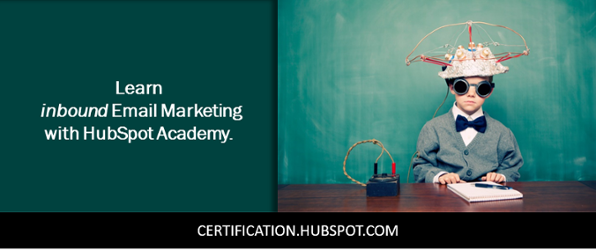Many marketing technicians use clicks as an easy way to measure interaction, but those clicks metrics don’t always tell the whole story.

Email sent! What’s next?
For example, you send a compelling email about your company's latest technological advances. Typically, after looking at click and open rates, further engagement is measured by comparing the amount of unique clicks (the first time a contact clicked a link) against total clicks (the total amount of clicks on a link). It’s great that you know the number of contacts that opened an email and clicked on a link, but now you must take it a step further by measuring what that click indicates.
Success should not be defined by total clicks, but instead by the number of contacts who have advanced in the lifecycle stage as a result of the email.
(Note: When viewing the e-mail performance page for an email sent from HubSpot, the Clicked column indicates the number of contacts that have clicked on an email, not the total number of clicks. Unique and Total clicks are not available as a metric within HubSpot.)
In the case of the technology advancement email, a click on a link indicates that your contact is interested in upgrading, or at least learning more about how future upgrades will affect their processes.
Because of the increased interest, you should consider them as either a Marketing Qualified Lead (MQL) or Sales Qualified Lead (SQL), and advance their lifecycle stage accordingly. You can do this in different ways.
Create a workflow where a click on a link in an email advances a contact's lifecycle stage.
- Enroll anyone who has received the email and clicked on the specific link
- Add an action to set the contact property Lifecycle Stage to MQL or SQL as appropriate
- Measure success by seeing how many contacts have completed the workflow
This is a great way to measure the engagement of a specific link and to identify contacts who have high interest. Take an additional step by enrolling these contacts in a second nurturing workflow, or by sending an internal email to the contact’s HubSpot owner.
Use a Workflow to add points to the Lead Score.
- Enroll a contact who clicked a specific link on a specific email after a specific date
- Add an action to add points to the contact’s lead score based on the click
- Set up a separate workflow that advances a contact to MQL/SQL based on a specific score
- Measure success by making a list of new MQLs/SQLs who have opened emails after a specific date
This is great way to measure a contact’s interest over a longer nurturing campaign, such as a monthly newsletter or product development campaign. Once a contact hits a specific score, send an internal email to the contact’s HubSpot owner.
Use a form to gather more contact information and to advance the Lifecycle Stage property.
- Craft an email with a compelling content offer, and set up a conversion path that includes a CTA, Landing Page with a form, and a Thank You Page that delivers the content
- Ensure the form includes a hidden field that sets the Lifecycle Stage property to MQL/SQL
- Measure success by monitoring the submission list of the form, or views of the Thank You Page, or by creating a list of MQLs/SQLs that have submitted the form
This is a great way to measure the seriousness of a contact’s intent and qualify them as an MQL/SQL as they will actually take a few moments to provide even more information about him/herself in order to receive the content.
By setting up one of these actions, you can now gauge the success of your email by measuring the number of contacts that have advanced in the lifecycle stage or filled out the form. And you can then use this information to nurture these contacts even further!
